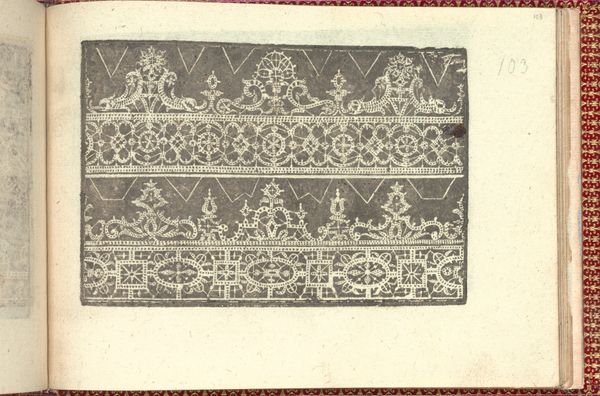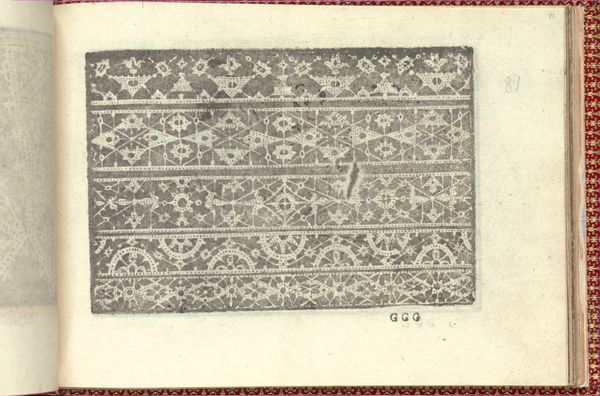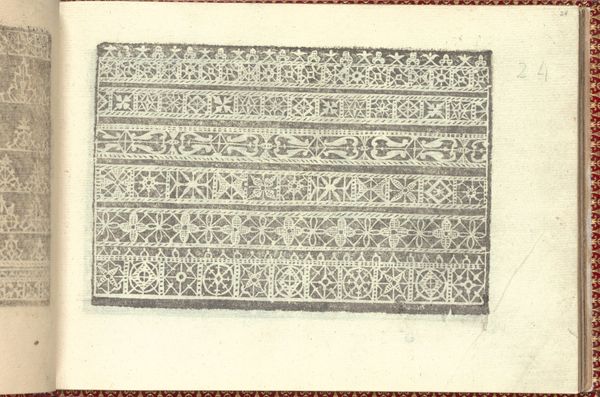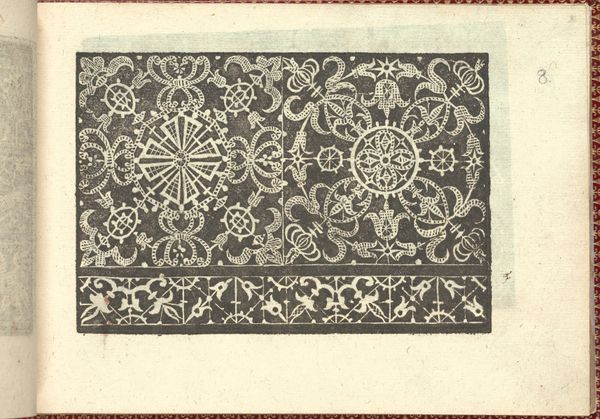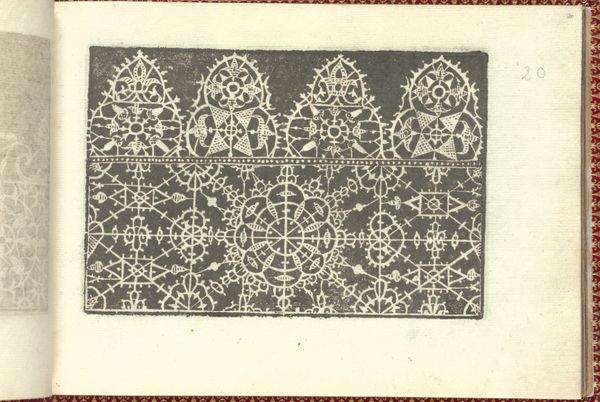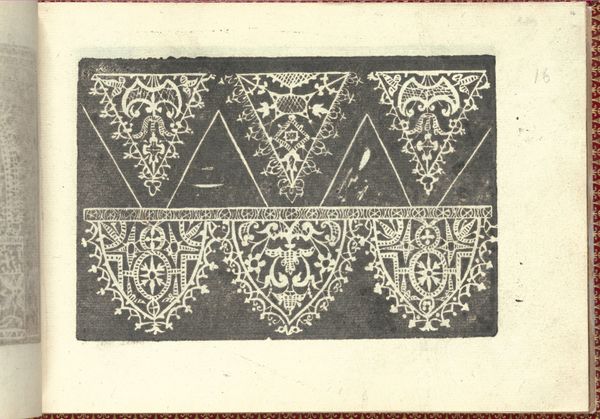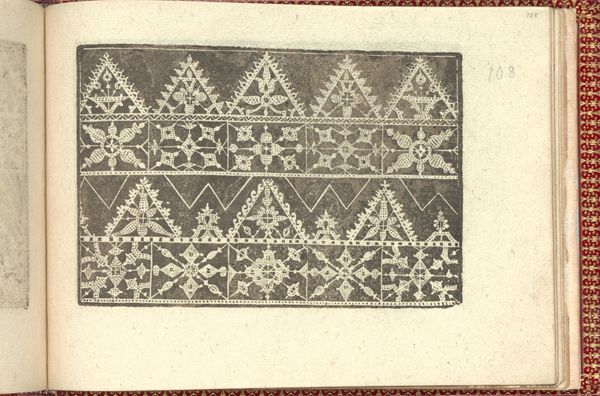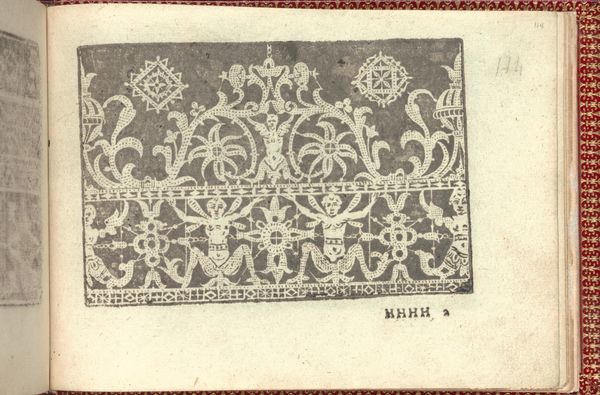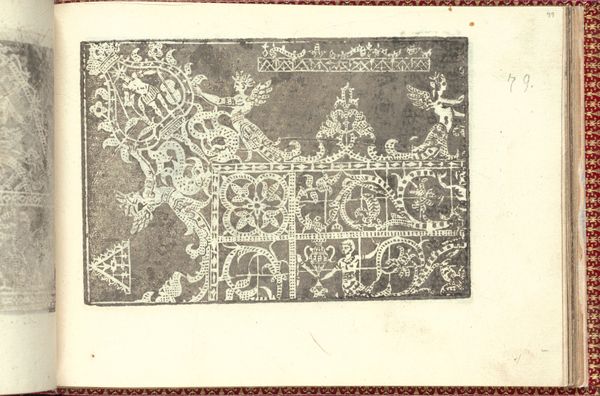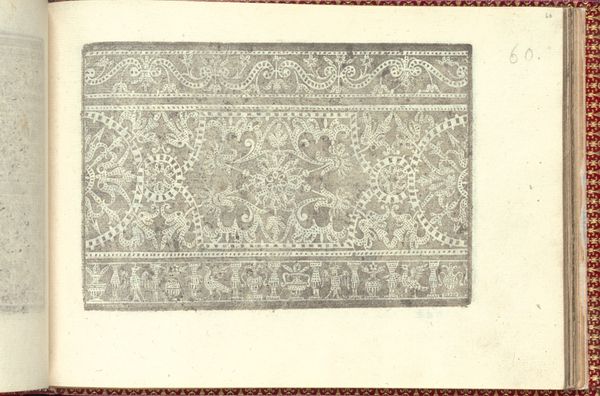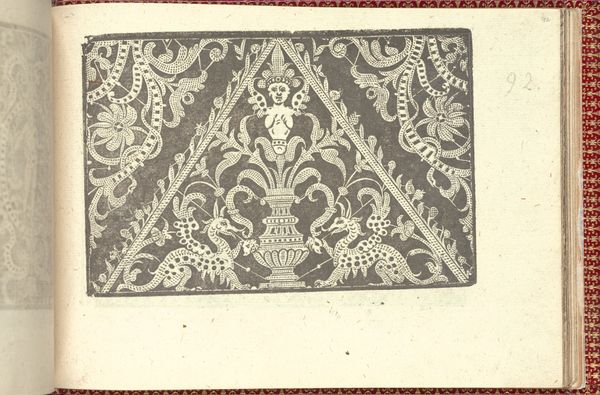
Corona delle Nobili et Virtuose Donne: Libro I-IV, page 99 (recto) 1601
0:00
0:00
drawing, ornament, print, intaglio, paper
#
drawing
#
ornament
# print
#
book
#
intaglio
#
paper
#
11_renaissance
#
geometric
#
line
#
decorative-art
#
italian-renaissance
Dimensions: Overall: 5 1/2 x 7 11/16 in. (14 x 19.5 cm)
Copyright: Public Domain
Curator: I’m struck immediately by the intricacy. It reminds me of something woven, maybe even embroidered, a slow and meticulous process. Editor: This is a page from Cesare Vecellio’s *Corona delle Nobili et Virtuose Donne*, dating back to 1601. It's an intaglio print on paper. Quite different from textile, though you're right about the impression of it. Curator: Ah, a pattern book! So it’s a tool, a set of instructions almost. But the choice of designs! There’s such variety in these bands of ornament. What kind of social coding went into what one might choose? Editor: Absolutely, and think about who "nobili et virtuose donne" actually were. The designs show geometric ornament mixed with almost fantastical human and animal forms, which are layered for potential clients. These patterns weren't simply aesthetic choices; they were signifiers of status, markers of belonging. What you chose reflected on your place in Venetian society. It’s not only what the lace looked like, but what production networks you contributed to! Curator: I agree entirely, thinking about where the raw materials came from—the silk, the precious metals perhaps—and who had access to them. It's also quite the document to look into questions of gender, labour and creativity during the Renaissance. Editor: Precisely. This book challenges the modern notions that fine art is something that does not overlap with "craft" or labor, when they both serve a parallel function. This image encapsulates an early form of globalization, of a system that's still very much in play today. It really offers an exciting access point into the fashion, or craft economies of the past. Curator: And even touches of individual artistry. You imagine lacemakers finding their own variations, perhaps even subtly subverting these patterns. The hand at work! Editor: Which opens so many questions for the cultural identity of Europe today, from gendered work expectations to global economy. Thinking of women’s art, labor, or cultural identity within an economic lens like this also lets us critique current fashion production, which still disproportionately falls on working class women. Curator: What a fascinating intersection of the ornamental and the political. I am going to be reflecting on this image for some time! Editor: Me too. It brings attention to labor and global processes that many overlook. I find I am seeing something new about women's role in the economy through new eyes.
Comments
No comments
Be the first to comment and join the conversation on the ultimate creative platform.
